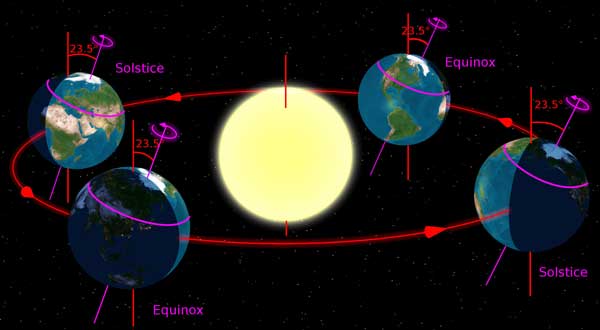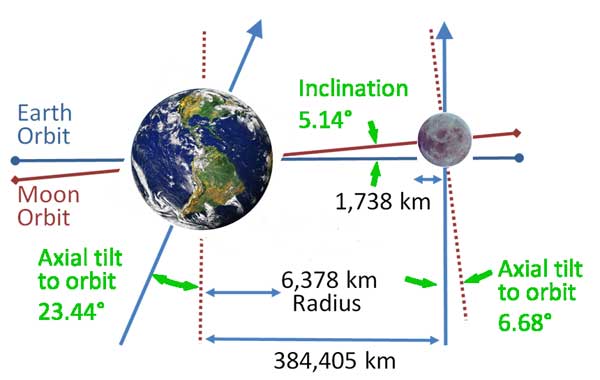Where Does the Sun Set North South East or West
Astronomy is the most ancient scientific discipline known. Such long-standing acquaintance, however, sometimes leaves us feeling that celestial phenomena are trivial. Is there anything simpler than knowing that the Sun rises in the east and sets in the west? After all, it happens every day of our life, right?
Well, not really!
When does the Sun not rise in the east and set in the west?
The Sun rises due exactly east and sets due exactly west on only two days of every year.
Sunrises and sunsets happen because Earth spins, counter-clockwise if we look down at the North Pole. The Sun rises and sets exactly due east and west only when the circular path of our turn on Earth's surface splits into two equal parts, half in the light and half in the dark. As our planet's rotation axis tilts by 23.5° with respect to its orbital plane, this alignment happens only at the spring and fall equinoxes.

Wikimedia Commons; modified by Alberto Vecchiato
During an equinox, the plane separating Earth's day and night sides contains both the North and South Poles. On any days other than the equinoxes, this plane is askew, and our circular path of rotation passes unequally through Earth's lit and dark sides. Therefore, the lengths of night and day vary, as does the position of the Sun's rise and set on the horizon.
What about the Moon?
We have seen that changes in the positions of sunrises and sunsets occur because our planet's rotation axis tilts with respect to Earth's orbital plane, and because that tilt changes with respect to the Sun as Earth moves in its orbit. We can use the same reasoning to explain a similar phenomenon for the Moon.
The Moon's orbit around Earth forms an angle of about 5° with respect to Earth's orbital plane. So Earth's rotation axis tilts by about 28.5° with respect to the Moon's orbital plane. So moonrise will also shift north or south of due east as the Moon completes its orbit.

NASA / Wikimedia Commons; modified by Alberto Vecchiato
In this case, though, the changes occur over the period of roughly a month instead of a year. Earth must complete a full orbit for the Sun to go through its extremes, rising the furthest north of east during summer solstice and the furthest south of east during winter solstice. The same holds for the Moon, which must also complete a full orbit around Earth to go through the extremes of its rising and setting locations.
Why does the Moon rise later every day?
As both Earth and the Moon are moving in their orbits, moonrise occurs later every day. Just as Earth spins counterclockwise when viewed from the North Pole, the Moon also orbits Earth counterclockwise. Therefore, every time we spin 360° with respect to the stars, completing a sidereal day (23 hours and 56 minutes), the Moon has moved a little in its orbit around Earth. The Moon orbits Earth every 27.32 days with respect to the stars, marking a sidereal month, so the amount it moves in one sidereal day is (360/27.32) degrees, about 13°. Earth turns 360° every sidereal day, so it will take about 13*(23.9/360) hours to make up the remaining 13°: 52 minutes. Each moonrise, then, will occur roughly 52 minutes later than the one before it.
Because the phase of the Moon also depends on its position relative to Earth and the Sun, the phase will change along with the time that the Moon rises and sets. Read more about the hows and whys of the phases of the Moon here.
Find sunrise/sunset and moonrise/moonset times using our free online Astronomical Almanac.
Where Does the Sun Set North South East or West
Source: https://skyandtelescope.org/astronomy-resources/sunrise-moonrise-east/
0 Response to "Where Does the Sun Set North South East or West"
Post a Comment